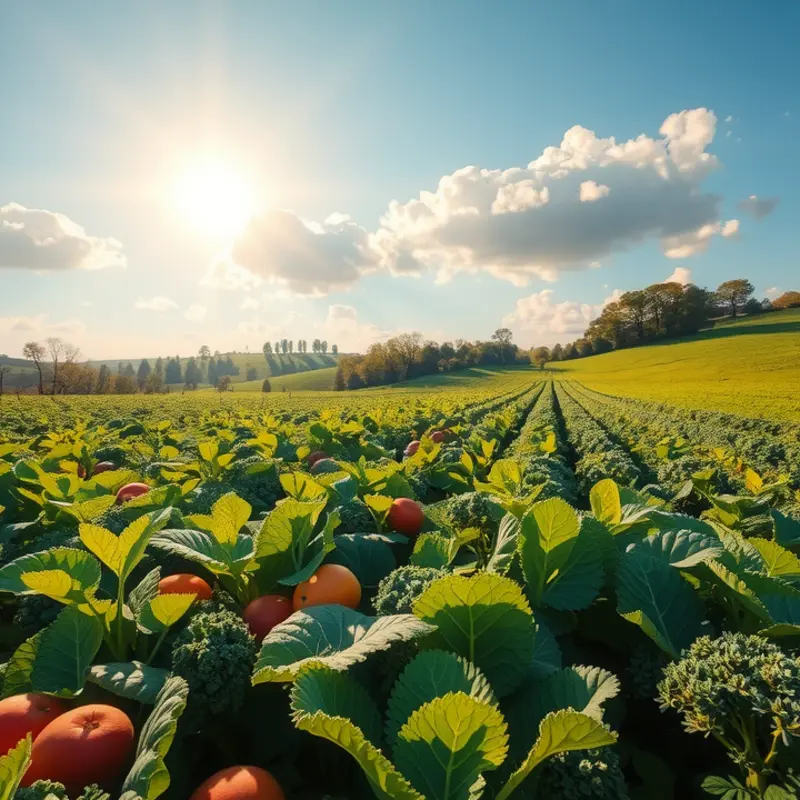Choosing sustainable dairy options has become crucial for environmentally-conscious consumers. The dairy industry significantly impacts greenhouse gas emissions, water use, and land degradation. By making informed choices, individuals can support eco-friendly practices that reduce their carbon footprint and promote animal welfare. Exploring sustainable dairy options empowers consumers to prioritize environmental health while enjoying dairy products in their daily diets.
Understanding Dairy’s Environmental Impact

Traditional dairy farming practices have long been integral parts of agriculture worldwide. However, their environmental implications are significant and multifaceted. The most pressing concern is the resource-intensive nature of conventional dairy farming. Cows require large amounts of feed, water, and land, and the cultivation of feed crops frequently involves heavy pesticide and fertilizer use. This practice results in habitat disruption, soil degradation, and significant water use, all of which contribute to environmental challenges.
Moreover, dairy farming is a notable source of greenhouse gas emissions, particularly methane. Cows naturally produce methane during digestion, and this gas is released into the atmosphere, where it contributes to climate change. While methane accounts for a smaller fraction of greenhouse gases than carbon dioxide, it is over 20 times more effective at trapping heat in the atmosphere, making it a potent contributor to global warming.
Water pollution is another critical issue linked to dairy farming. Runoff from farms can carry nutrients and pollutants, such as nitrogen and phosphorus from fertilizers, into nearby water bodies. This runoff often leads to eutrophication, a process that results in excessive growth of algae, depleting oxygen levels, and harming aquatic life. The treatment of animal waste also poses substantial challenges, as it can leach into groundwater supplies, contaminating drinking water sources and affecting human health.
Recognizing these environmental challenges underscores the need to explore sustainable dairy alternatives. These alternatives often use fewer resources and produce fewer emissions, making them a compelling choice for consumers seeking to minimize their ecological footprint. Plant-based milks, such as almond, oat, and soy, typically require fewer resources compared to dairy milk and produce lower greenhouse gas emissions.
Furthermore, choosing sustainable products supports efforts to reduce waste and inefficiencies in the food system. For instance, sustainable dairy producers might invest in waste reduction strategies such as byproducts’ conversion into biogas or compost. This approach aligns with eco-friendly practices and reduces the overall environmental impact of dairy production. For practical tips on minimizing food waste in your kitchen, explore eco-friendly kitchen storage solutions, which can complement sustainable dairy choices.
Making informed dairy choices requires awareness and commitment. It involves understanding how food production impacts the environment and identifying sustainable practices you can support as a consumer. By opting for eco-friendly dairy products, you contribute not only to a healthier planet but also to a sustainable global food system. Each decision we make at the marketplace can either exacerbate or alleviate environmental stress. Thus, selecting dairy alternatives is an essential step towards fostering a more sustainable future.
Choosing Sustainable Dairy Products

Selecting eco-friendly dairy products requires a multifaceted approach that considers several key factors. The first step is understanding organic certification. This certification ensures no synthetic fertilizers, hormones, or pesticides are used in the production process. Organic farms often emphasize crop rotation and autonomous pest control, reducing environmental impact.
When considering local sourcing, it’s not just about proximity. Local dairies may employ traditional farming methods that are more sustainable and maintain biodiversity. Purchasing locally also reduces carbon emissions associated with long transportation routes, thus contributing to a smaller carbon footprint.
Understanding animal welfare practices is another crucial aspect. Farms that prioritize high welfare standards tend to practice rotational grazing, allowing cows access to pastureland. This not only ensures better health and happiness for the animals, but also promotes soil health and biodiversity. Look for labels that indicate high welfare standards, which often assure that animals have been treated ethically.
Addressing unconscious eating habits can further assist in making mindful choices around dairy. Implementing mindful practices highlights the importance of selecting quality over quantity. Additionally, supporting smaller, family-owned farms can lead to a more sustainable supply chain. These farms often adhere to traditional methods that preserve local ecosystems.
By combining these strategies, consumers can better navigate the complexities of sustainable dairy selection. The ultimate goal is to unite ethical production, environmental mindfulness, and local economic support, forging a path toward a greener plate.
Final words
Making sustainable dairy choices is vital for reducing environmental degradation and promoting ethical farming practices. By understanding the impacts of traditional dairy farming and embracing eco-friendly options, consumers can significantly influence sustainable agriculture’s future. Consider purchasing dairy products from local farms practicing responsible animal welfare, exploring organic certifications, and choosing plant-based alternatives when possible. Your choices contribute to a healthier planet and support a growing demand for sustainable food systems. Remember, every small decision adds up to a considerable impact, making it essential to prioritize our food choices and their effects on the environment.








